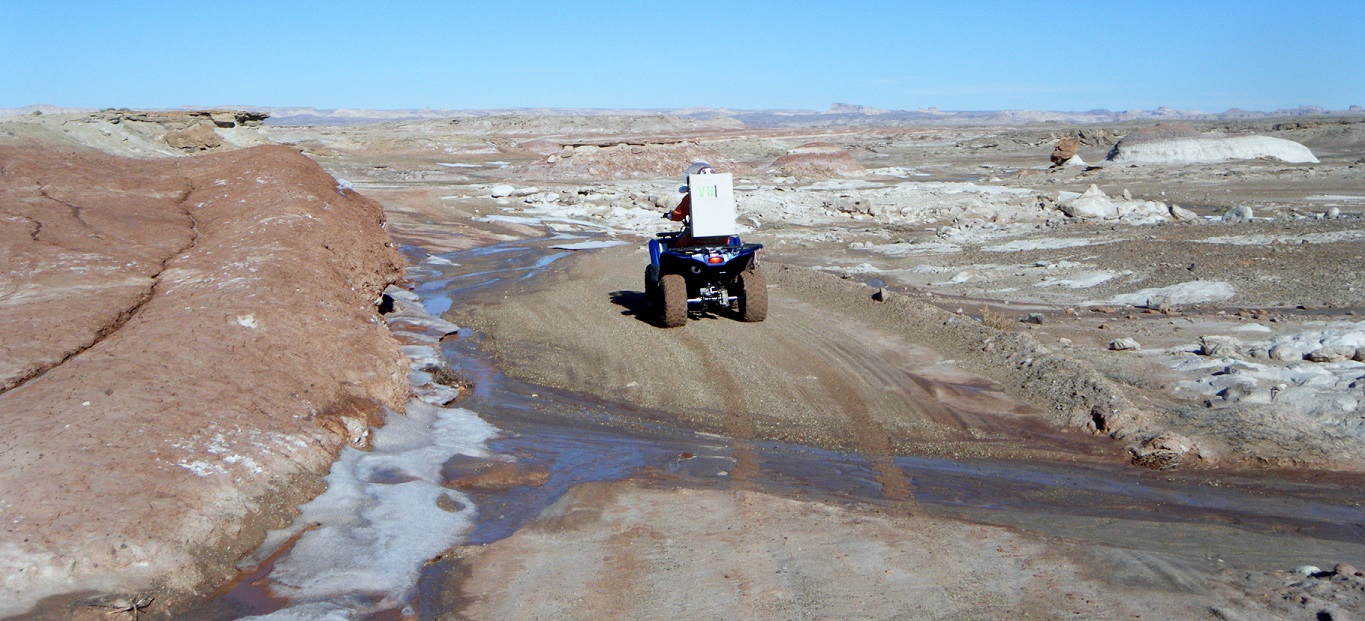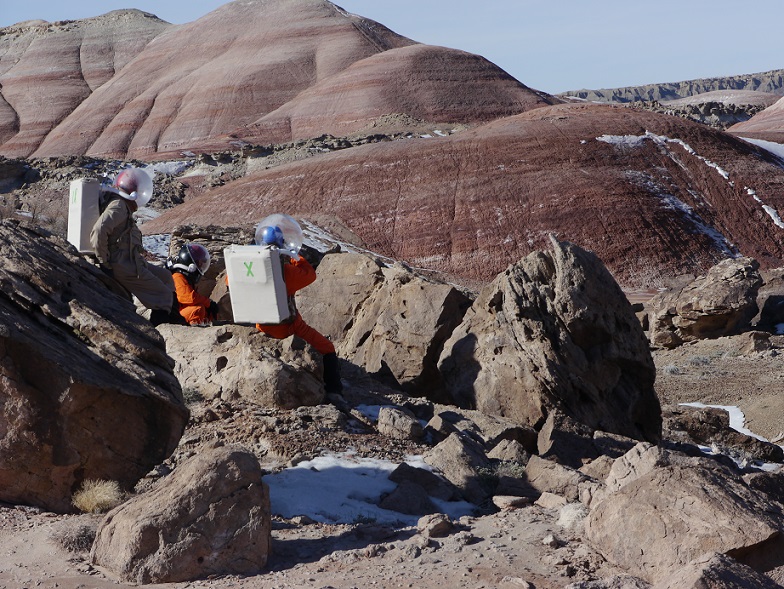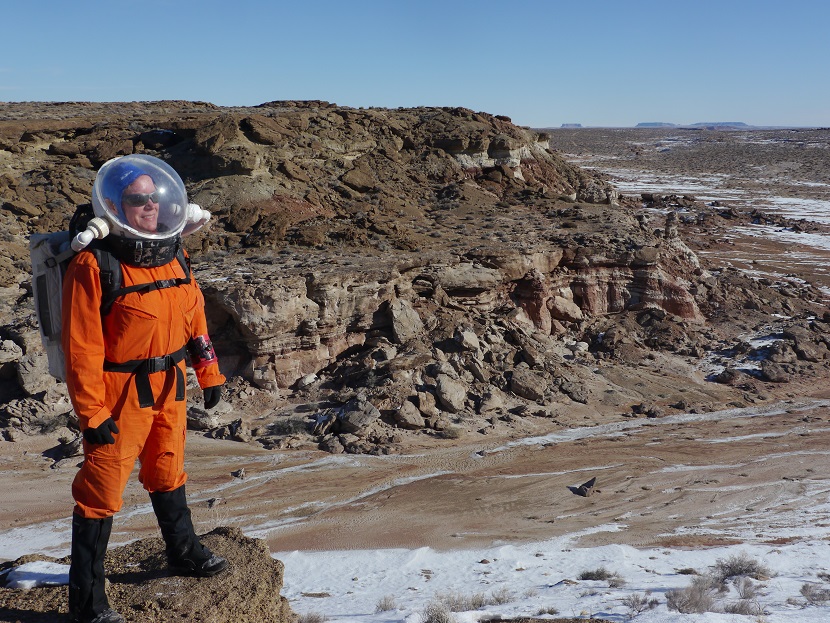Mock Mars Mission: Farewell to a Simulated Red Planet

Editor's Note: In the Utah desert, scientists are attempting to recreate what a real-life mission to Mars might be like, and SPACE.com contributor Elizabeth Howell is along for the ride. Here's her latest dispatch.
HANKSVILLE, Utah — Early on in my two-week Mars Desert Research Station mission, I was hiking a hill steeper than I had ever faced. Crew 133 executive officer Gordon Gartrelle coaxed me up, a process that included teaching me the meaning of the word "commit" in hiking. When you decide to put your foot down on a spot, that's where it stays; you don't head backwards.
"Commit" could have been the theme for our mock Mars mission as well. Never been in a spacesuit before? Well, when you have that helmet on your head, you have little choice but to commit to a "Marswalk." The five-day water shortage we faced? Commit to fewer showers.
There were sweeter ways to commit as well. I walked into this simulation not knowing the five people I would be spending two weeks with. By halfway through our mission, we had such a great time that we were already talking about how to visit each other. [See More Photos from the Mock Mars Mission]
Marstronaut work

One major goal of the Mars Society facility is to simulate Red Planet exploration as closely as possible. Team members rode all-terrain vehicles and set up a radio telescope in spacesuits, simulated anesthesia protocols on Mars and measured exertion levels during our Marswalks. We also tested a hydroponics system in our "GreenHab" (greenhouse), which seems to be working well so far.
Data collection is ongoing, but crewmembers are hoping to see school assignments fulfilled and published results accomplished as a result of our two weeks here. As a journalist, watching the methodical way these scientists and engineers went about their work gave me even more respect for what they do.
Get the Space.com Newsletter
Breaking space news, the latest updates on rocket launches, skywatching events and more!
We also have a better sense of the challenges that astronauts face. Setting up that radio telescope took more than twice as long as anybody anticipated, because of how hard it was to maneuver in our spacesuits, among other factors. Four-hour "Marswalks" in Utah were tiring, making us appreciate how fit astronauts must be to do their spacewalks in zero gravity for six to eight hours.
Serious skills

In two weeks, you get a sense of the basics of astronaut living, but there is a Mars Society simulation that continues for much longer. On Canada's Devon Island, the Flashline Mars Arctic Research Station plans to host a team who will stay there for an entire year, including the Arctic winter.
I've come to appreciate, however, that staying in remote areas for a few weeks does require a variety of skills. Can you fix an all-terrain vehicle? Can you cook for several people using dehydrated food? How about hiking, first aid and taking care of yourself far from the comforts of civilization?
The answer comes in part through rigorous training, and also in part through relying on your crewmates. I learned so much from the others on Crew 133, not only in terms of simulating space, but also in terms of being a well-rounded person.
Our Mars simulation concluded on Friday (Jan. 17) and we will left the Hab for good on Saturday. Some crewmembers plan to come back one day. Others may do extended missions in Antarctica or elsewhere. Whatever we do, though, we will stay in touch.
Follow Elizabeth Howell @howellspace, or SPACE.com @Spacedotcom. We're also on Facebook and Google+. Original article on SPACE.com.
Join our Space Forums to keep talking space on the latest missions, night sky and more! And if you have a news tip, correction or comment, let us know at: community@space.com.

Elizabeth Howell (she/her), Ph.D., was a staff writer in the spaceflight channel between 2022 and 2024 specializing in Canadian space news. She was contributing writer for Space.com for 10 years from 2012 to 2024. Elizabeth's reporting includes multiple exclusives with the White House, leading world coverage about a lost-and-found space tomato on the International Space Station, witnessing five human spaceflight launches on two continents, flying parabolic, working inside a spacesuit, and participating in a simulated Mars mission. Her latest book, "Why Am I Taller?" (ECW Press, 2022) is co-written with astronaut Dave Williams.









